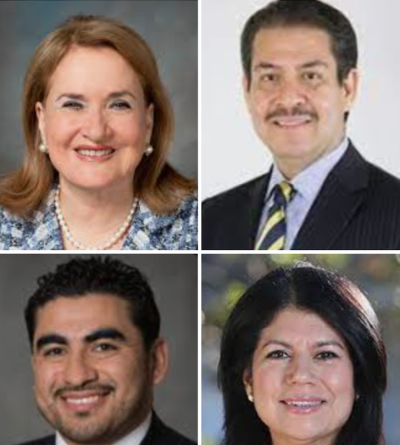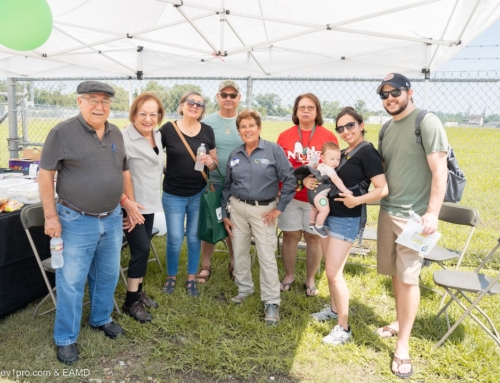This post is also available in:
![]() Español (Spanish)
Español (Spanish)
 Multi-lingual business owners and employees can better problem-solve for a diverse customer base and build rapport in the local community, helping to attract and retain new customers. This situation is especially true in East Aldine, where some 80 percent of the area’s growing population is Latino and most people speak some Spanish.
Multi-lingual business owners and employees can better problem-solve for a diverse customer base and build rapport in the local community, helping to attract and retain new customers. This situation is especially true in East Aldine, where some 80 percent of the area’s growing population is Latino and most people speak some Spanish.
These factors mean the tight-knit community just north of the Houston city limits provides not only the customer base, but also the employment base, for the success of new businesses.
East Aldine is also conveniently located to commerce hubs where Spanish and many other languages are spoken: Bush International Airport – which attracts travelers from all over the world – and the international Port of Houston. The community also has proximity to a variety of import/export businesses with ties to multiple nations and cultures.
Employees who speak more than one language can help with initial market testing of products and offer cultural insights to improve services. Speaking the same language as customers also helps workers efficiently meet customer needs. It helps customers feel comfortable, builds trust, and is key to customer service.
But bilingual employees can also be good for business in other ways. A Penn State study found that people who speak two languages are better at prioritizing and multi-tasking, two important business skills. Other research has found that people who are bilingual can process information faster than those who speak just one language. They also do better on tasks in which conflict management is necessary.
 Business owners can hire bilingual staff or provide or partially fund language training for employees who don’t already speak more than one. For example, Lone Star College in East Aldine offers a wide variety of Spanish classes, including “Speed Spanish,” “Workplace Spanish 1” and “Spanish Conversation 1.”.
Business owners can hire bilingual staff or provide or partially fund language training for employees who don’t already speak more than one. For example, Lone Star College in East Aldine offers a wide variety of Spanish classes, including “Speed Spanish,” “Workplace Spanish 1” and “Spanish Conversation 1.”.
In the U.S., one in five residents speak a language other than English at home, according to the United States Census Bureau. In Houston, the top languages spoken, in addition to English and Spanish, include Vietnamese, Chinese, Arabic and French.
To incorporate more than one language into your business, consider adopting the following strategies:
Spend time in the community getting to know customers
Work to better understand your Spanish-speaking customers’ needs and wants by spending time networking along with your bilingual employees in the community or even working with a multicultural marketing consultant. Some businesses then decide to tweak their products—or add new ones—so they can cater to the new multicultural clients they want to attract.
 Make your business website multilingual
Make your business website multilingual
Translate your website into Spanish, too. If you have the funds available, invest in a professional translation service rather than simply using Google Translate, which can often miss nuances, including dialect. Dialect is important. For example, if the majority of your Spanish-speaking customers are from Mexico, it may be better to use terms commonly used by Mexican Spanish speakers as opposed to terms that are more often used in Spain or in Central American countries. Making your website more accessible in this way will drive more traffic to your site, and it could also help to increase sales.
If you can’t hire bilingual staff, tap into free tech
If you don’t have the resources to hire bi- or multilingual staff, an alternative could be to tap into free apps like Google Translate and Apple’s Translate, both of which make use of machine learning to turn mobile and desktop devices into personal translators. There are plenty of translation apps available, so business owners interested in using one with customers may want to test out several to see which would work best for their needs.
Invest in bilingual marketing
As you plan your marketing and community outreach efforts—fliers, billboards, brochures, and even your social media—translate them into Spanish as well. Research shows that consumers respond more favorably to messages they receive in their native language. One survey shows that 65 percent of consumers prefer to have content in their native language, while 75 percent would also rather buy products they learn about through information in their native language.
Communicating in more than one language as a business owner does require some extra leg work, —and often, funds — to invest in new tools, people, technology and strategies. But in the end, for business owners and entrepreneurs who settle in East Aldine, communicating in more than one language will help to fuel your success.
In photos: For-profit businesses such as Suvida; government agencies and non-profits; and elected leaders communicate with East Aldine customers and constituents in more than one language. Clockwise from top left, they include U.S. Rep. Sylvia Garcia, County Commissioner Adrian Garcia, state Sen. Carol Alvarado and state Rep. Armando Walle.
— By Deborah Lynn Blumberg







